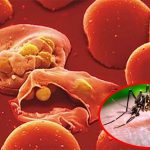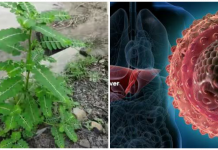Malaria Parasites: What are the species of Plasmodium and their mosquito vectors?
Malaria is a major public health challenge and according to World Health Organisation in 2018, 405,000 people died of malaria, most of them are children in Africa.
In Nigeria, malaria kills 81,640 persons per year according to the WHO. Nigeria bears the biggest burden of malaria parasite In Africa.
It is a life-threatening disease caused by parasites of the genus plasmodium.

Species of Plasmodium
Plasmodium falciparum
Plasmodium vivax
Plasmodium malariae
Plasmodium ovale
Plasmodium knowlesi (though not common)
Malaria Vectors : Adult Female anopheles mosquitoes, aedes mosquitoes, culex mosquitoes
P. falciparumis by far the most lethal in humans, resulting in hundreds of thousands of deaths per year. A number of drugs have been developed to treatPlasmodiuminfection; however, the parasites have evolved resistance to each drug developed.
Two species of plasmdium, P. vivax and P. ovale, can occur again (relapsing malaria) after treatment.
Duffy Antigen and Malaria
The Duffy glycoprotein is a receptor for chemicals that are secreted by blood cells during inflammation. It also happens to be a receptor forPlasmodium vivax, a parasite that invades red blood cells (RBCs) and causes malaria.
RBCs that lack the Duffy antigens are relatively resistant to invasion byP. vivax. This has influenced the variation in Duffy blood types seen in populations where malaria is common.
Persons without Duffy antigen on their red blood cells are protected from malaria caused by P. Vivax because the malaria parasite cannot invade their red cells. This does not mean they are protected from malaria caused by other species like P. falciparum, P. ovale, P. malariae, and P. knowlesi
Symptoms
Usually begin 10 days to 4 weeks after infection:
Fever
Headache
Chills
Fatigue
Nausea or vomiting
Abdominal pain
Modes of transmission
Mosquitoe bites
Blood transfusions from infected persons
Relapse: Which is common in P.ovale and P. vivax, is when symptoms reappear after pararsites have been eliminated from the blood but persist as dormant hypnozites in the liver.
Recrudescence: Common in P.falciparum, is also recurrence of symptoms due to parasites surviving in the blood as a result of inadequate or ineffective treatment.
Complications of Malaria
Anaemia
Cerebral malaria
Liver failure
Shock
Pulmonary oedema
Kidney failure
Hypoglycaemia
Acute respiratory distress syndrome(ARDS)
Swelling and rupturing of spleen
Coma
Neurological Deficits
Dehydration
spontaneous bleeding
Malaria can complicate pregnancy by causing premature birth, low birth weight babies, stillbirths, miscarriage and death of mother.
Susceptible Population
Anyone bitten by female anopheles mosquitoes.
Young children, pregnant women and people with genotype AA are more susceptible.
Prevention
Prevention, which is better than cure includes:
Insecticide-treated mosquito nets(ITN)
Indoor spraying with residual insecticides(IRS)
Environmental management: such as the removal or destruction of breeding sites of mosquitoes.
“Antimalarial medication is used to both treat and prevent malaria”
ABCD of Malaria Prevention
Awareness of risk
Bite prevention
Chemoprophylaxis
Diagnosis
Sources:
Edited by Dr Udomoh























